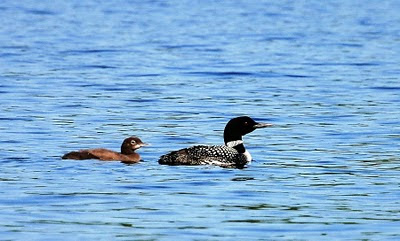
Red Lake, Ontario, must have one of the highest populations of loons on the planet.
I have no proof of this but it is hard to fathom how any lake could have more loons than this one.
There is a breeding pair of loons literally at every turn.
Last year almost every pair successfully raised a chick ending a four-year period where nearly every pair lost their eggs due to rising summer water levels. Ironically, last year had the highest summer precipitation in history but it came after the young loons had hatched. It's pretty hard to drown a swimming loon!
We love our loons and for good reason.
Loons never compete with man for gamefish the way cormorants do. One big reason is that loons are territorial. They self-regulate their numbers. It basically works like this: a breeding pair of loons will claim all the water in sight of their nest. No other loon will be allowed to invade.
The reason there are so many pairs of loons on Red Lake is that the lake is so irregularly shaped. There are bends and bays and islands all over the place. So there are lots of places for a pair of loons to call their own.
Loons aren't kind to other swimming birds coming into their territory either. They will attack and kill ducks like mergansers, for instance. I'm sure they feel the same way about cormorants.
So Red Lake has exactly the same population of loons all the time. The number of territories doesn't change and neither do the number of loons.
They have a wide variety of calls and can often be heard all night long "yodelling" to each other.
Loons will build their nests as soon as the ice is off the lakes. They usually lay two potato-size eggs. The young must compete in the same way eaglets do. Frequently only one youngster survives. It's survival of the fittest.
Click to go back to our website:
Click to see the latest on the blog:


No comments:
Post a Comment